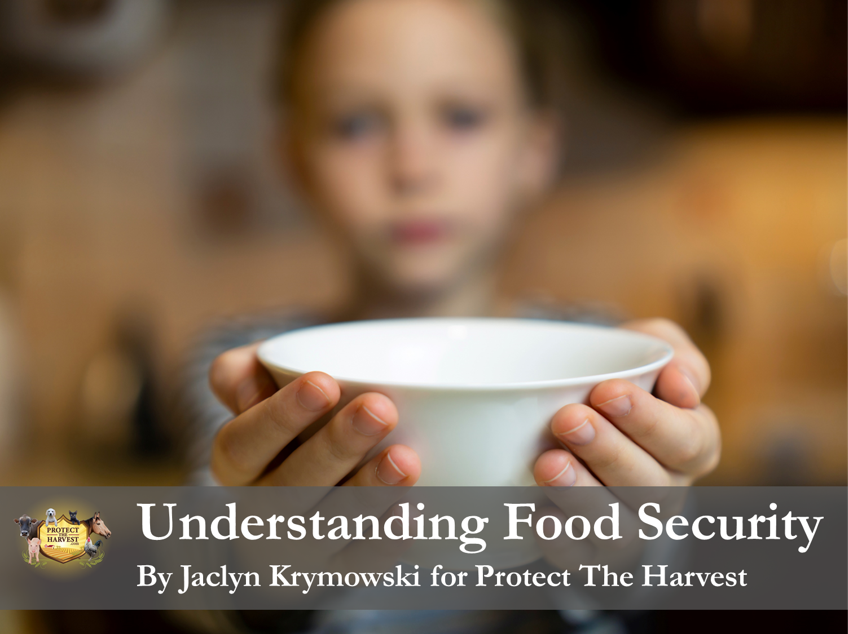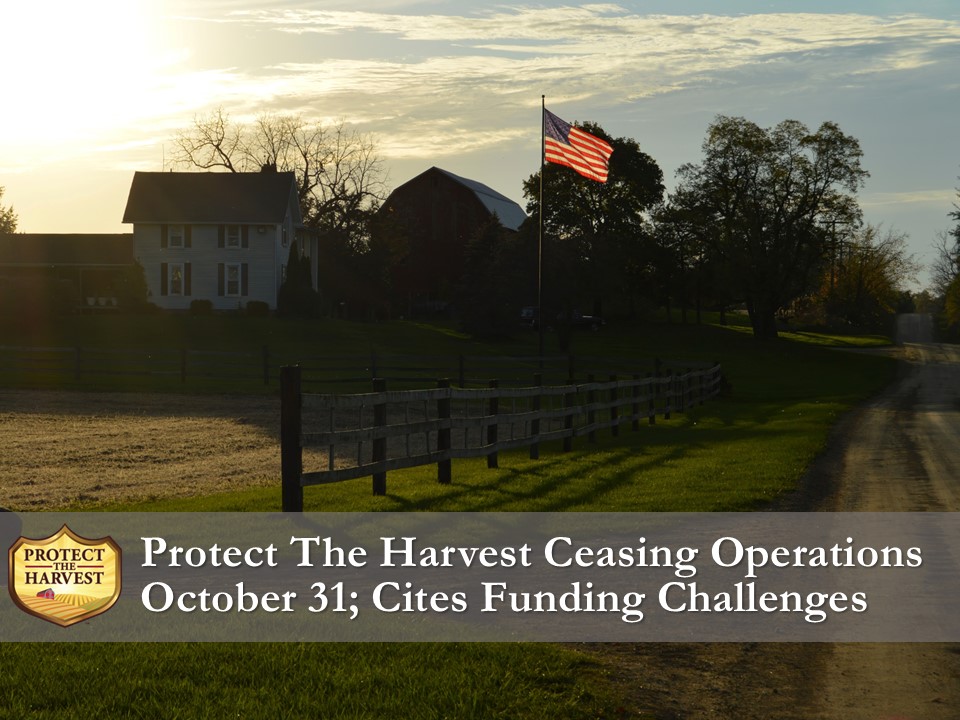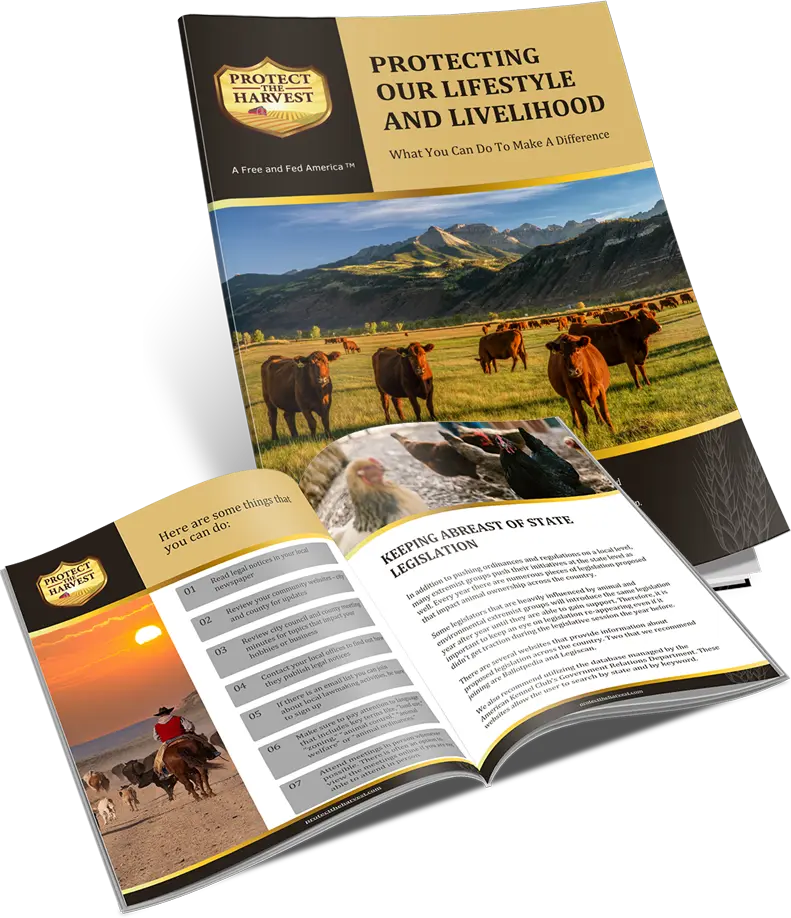
UNDERSTANDING FOOD SECURITY
By Jaclyn Krymowski for Protect The Harvest
Nutrition impacts every single person across all sociological demographics. Because of this, maintaining food security and promoting productive discussion around the topic are both significant.
The definition of “food security” is often misunderstood, miscommunicated, or used incorrectly. Likewise, the factors contributing to a secure food system are complex and unfamiliar to most consumers. Often food insecurity is associated with poverty and low-income nations. While that is not entirely inaccurate, there is much more to the picture. Even highly developed countries must keep vigilant about maintaining food security and addressing weaknesses in their systems.
A well-grounded full-scope understanding of food security – its components, its meaning, and how we can preserve it – is essential for everyone involved in the conversation. This is especially important now, as we continue to see our consumer-end prices rise all around us. The public must know the facts and myths about our food security situation and how the whole supply chain collaborates.
The Definitions
Before we dig into the measurements and the branches that extend from this global issue, let’s break down the differences between food security and insecurity. It should also be noted that important definitions illustrate the key differences between food insecurity and hunger.
Food Security
When a nation, region, or individual is in a state of food security, there are no reported indications of limitations in securing food or the hindrances to obtaining food are very limited.
Food Insecurity
Food insecurity is a condition that assesses the economic and social conditions associated with the limitations and uncertainty of obtaining adequate food sources. Food insecurity means there are reports of reduced food quality or there is limited access to food and/or a disrupted eating pattern. This means a household or community may not be able to purchase enough food or there is a food shortage.
Common limitations to accessible food would include:
• No transportation into the area
• The food grown in the area is not suitable for human consumption
• Inability to import goods necessary for production, etc.
Hunger
Hunger is a physiological condition based on the individual and can result from food insecurity. At its root, true hunger is a result of not having secure or easily accessible food sources. This can be caused on small or large scales and is often caused by a combination of factors.
In developed countries like the U.S., essential food is usually readily available and abundant. However, issues like distribution, food deserts, and financial barriers may still lead certain populations to suffer from hunger in various ways.
In developing nations, hunger may very well result from a poor food production system that simply lacks the resources and means to deliver enough food to a population.
Measuring Up
There are several ways that food security, and lack thereof, can be quantified. Due to the complexities of our modern food system and the farm-to-fork journey each product must take, there are a multitude of factors at play. The state of industries that contribute to agriculture such as transportation, energy, and fertilizer also have an impact on the production and retail levels.
Food Security Baseline
The baseline for food security begins with a minimum of readily available food that is both safe and of nutritional value and can be acquired without the need to steal or scavenge.
According to the USDA, both food security and insecurity can be broken into two categories. Food security can be high, having no indications of issues or limitations to food access; or marginal, with one or two indications such as anxiety over food sufficiency with little or no change in diet.
To fall within the true “food insecurity” bracket, food security is either low, resulting in a reduction in the quality, variety, or desirability of food in the diet, or very low with reports of multiple indications of disrupted eating patterns with reduced food intake.
Other factors that contribute to security are availability, use, and access to different foods.
These three parts make up various components of food security and also reflect moving and diverse aspects that make food security difficult to achieve in some countries.
Food Availability
Food availability simply means that it is accessible; it is attainable for a certain demographic. This covers both locally grown and distributed foods and foods that are made available thanks to the supply chain transporting and importing them.
The inclusion of imports in food availability is because not all areas are fit for growing certain crops or don’t have good resources for production inputs like fuel, energy, fertilizer, or sufficient technology. It may also be due to other reasons related to health or other limitations.
Food Accessibility
Food accessibility is about the sufficiency of resources and how we obtain them to meet dietary needs. Barriers to accessibility might be income, retail prices, and the inputs needed to create the end product. This aspect is especially influenced by the state of the economy and the production cost.
Utilization
Utilization is the way we use food to meet our dietary needs. This also includes educating on nutrition and how to use available food sources. An added aspect of food utilization is the handling and sanitation of food to make sure we’re not spreading contaminants and harming other crops or not losing products during transportation.
Modern Food Production is Important to Security
Food security is more important than most people realize. Although resources may seem easy to acquire, it is not the case for all countries and not even all Americans.
Large modern farms have contributed significantly to making food affordable and plentiful to all income brackets. These modes of food systems are especially beneficial to the long-term food security effort in terms of both physical and economic access. However, economic, social, or environmental turbulence can still cause substantial impacts even with these strengths.
Even seemingly minor modern issues like food elitism and misinformation can negatively affect food security, especially when they make consumers fearful, or impact food production and policies.
Food in Today’s World
Food production and distribution are impacted at the regional, national, and international levels. Shifts in these different economies also directly affect food pricing and availability.
It is easy to understand that natural elements beyond human control, such as drought or disaster, can have devastating impacts on the whole food system. However, what many do not realize is that poor governmental oversight and legislation pushed by animal or environmental extremists – such as those making food production more expensive and difficult – have the potential to hinder food access at a greater level.
Resiliency is Key
To navigate these inevitable obstacles and remain as resilient as possible, the food system must remain diverse and data-driven. The use of science-based production practices to remain both efficient and cost-effective is critical for the protection of our food security.
For example, livestock and crop production work together hand-in-hand to reduce waste and create healthier soils. Likewise, local and international production and distribution work together to enhance accessibility for consumers.
Food security is a topic that we should all care about and it should remain at the forefront of public discourse. This should be done so while understanding the complexities and in a way that promotes the well-being of all involved.
Protect The Harvest will continue to bring to light the issues that threaten our national food security. Information gives us power and that power will help us stand together to protect our food supply and those providing those resources to us.
Links
Read more about food security and insecurity HERE and HERE
Read more about livestock and crop collaboration HERE
Read more about food elitism HERE
Read more about legislation and food security HERE


